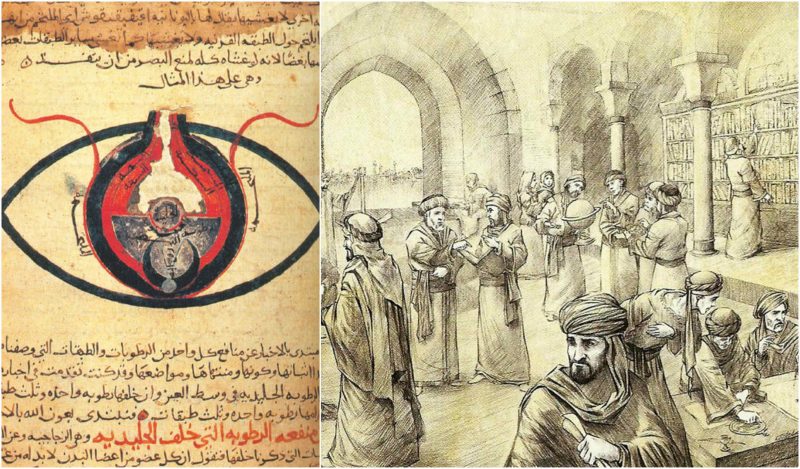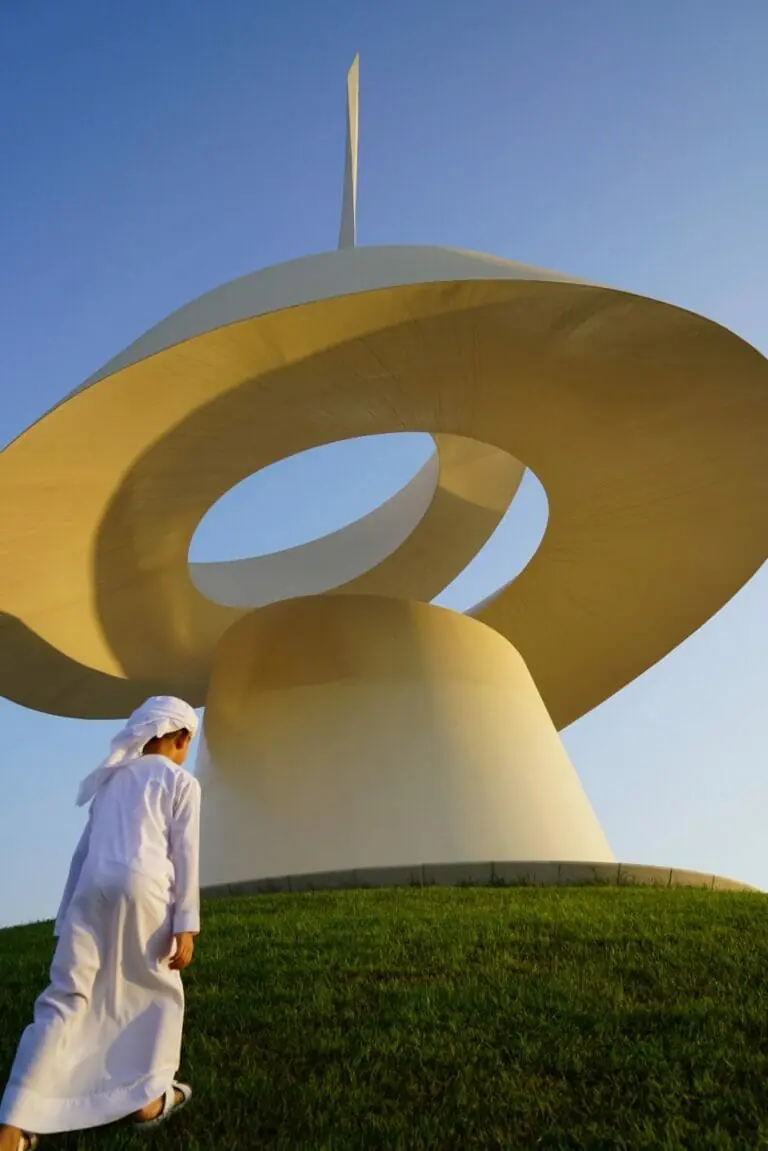Table Of Content

Additionally, al-Khwarizmi wrote about the astrolabe, sundial, and elaborated on Ptolemy’s geometric model. Al-Khwarizmi is also known as the first geographer of Islam with his famous Picture of the Earth treatise. In Picture of the Earth, he arranged the coordinates of hundreds of cities in the world at that time and gave instructions for drawing a new map of the world. George Sarton, one the most famous historians of science known for his book, Introduction to the History of Science, called the period between 800 and 850 AD “The Time of al-Khwarizmi”. Besides that, this mathematician is responsible for the introduction of the Hindu decimal system to the Arab world, and through it to Europe.
Viral Articles
This lesson plan sheds light on the scientific discoveries and inventions that emerged during this era, showcasing their impact on today's technology. This resource includes informational slides for classroom use, online readings and student activities – all designed to provide students with a deeper understanding of the Muslim scholars who paved the way for modern science. Great Muslim scholars exchanged ideas, created inventions that would radically change society, and translated philosophical works from the Greeks, the Persians, the Europeans, the Chinese, the Indians, and the Sumerians. The heyday of Baghdad was 1,200 years ago when it was the thriving capital of the Muslim world.
Nixon Birthplace at the Nixon Library and Museum
But it was also al-Maʾmūn’s reign that brought about a change in wind for Bayt al-Hikmah, which had hitherto specialized in Persian knowledge. In the final years of his reign, he undertook a dramatic shift in the imperial ideology. He endorsed an Islamic theology that stressed free will and dialectical reasoning (see kalām; Muʿtazilah). In an ironic show of force, al-Maʾmūn engaged in an inquisition (the miḥnah) and persecuted those who would not conform. The intellectual weaponry of the inquisition was supplied by the import of Hellenistic thought and the translation of Greek philosophy into Arabic, which al-Maʾmūn had begun sponsoring in the years prior to his conversion.
Heritage Square Museum
A fellow expert on Aristotle was Abū ʿUthmān al-Jāḥiẓ, who was born in Basra around 776 but he spent most of his life in Baghdad. Al-Ma’mun employed al-Jāḥiẓ as a personal tutor for his children, but he had to dismiss him because al-Jāḥiẓ was "Goggled-Eyed", i.e., he had wide, staring eyes which made him frightening to look at. Topics covered in this resource include the history of Baghdad as a hub of scientific and cultural enlightenment during the Golden Age of Islam, as well as the role of the Translation Movement in preserving and expanding scientific and philosophical knowledge through the House of Wisdom. Students will delve into the historical context that gave rise to this movement, exploring how Arab scholars translated Greek, Persian and Indian texts into Arabic.
History as the royal library in Baghdad
These libraries had the intention of reproducing the advantageous and beneficial characteristics that are known throughout the world because of the House of Wisdom. The House of Wisdom was much more than an academic center removed from the broader society. Scholars from the Bayt al-Hikma usually doubled as engineers and architects in major construction projects, kept accurate official calendars, and were public servants. The House of Wisdom or Bayt al-Hikma movement, which flourished in Baghdad in the Middle ages, gathered together men of science, and of learning in general, with the aim of developing an interdisciplinary corpus of knowledge for the benefit of the whole of society. 2300 Silver Lake BoulevardLos Angeles, CA 90039-vdl.orgFamed Viennese-American architect Richard Neutra built an experimental glass house and studio in Silverlake, called the VDL Research house after the Dutch industrialist Cornelius H. Van der Leeuw who loaned him the money.

This shows that the people of that time – these at least- were not extremists & did not hold to the ferocious writings in the Koran that cause the violence of the likes of ISIS nowadays and in other times & places. The problem is always that of the few who take literally every word spelt out in their religious ‘book’ !!! It still gives us a problem in this age as we try to deal with the kooks who want to blow up everyone who won’t just follow their professed ‘God’ !

Baghdad’s location and cosmopolitan population made the perfect location for a stable commercial and intellectual center. The Abbasid dynasty had a strong Persian bent, and adopted many practices from the Sassanian Empire – among those, that of translating foreign works, except that now texts were translated into Arabic. For this purpose, al-Mansur founded a palace library, modeled after the Sassanian Imperial Library, and provided economic and political support to the intellectuals working there. He also invited delegations of scholars from India and other places to share their knowledge of mathematics and astronomy with the new Abbasid court.
Ahmad Hilal Abid: Offering students support and mentoring HeraldNet.com - The Daily Herald
Ahmad Hilal Abid: Offering students support and mentoring HeraldNet.com.
Posted: Wed, 10 Apr 2024 07:00:00 GMT [source]
Assassin's Creed Mirage House of Wisdom walkthrough: How to complete, objectives, rewards, and more - Sportskeeda
Assassin's Creed Mirage House of Wisdom walkthrough: How to complete, objectives, rewards, and more.
Posted: Wed, 11 Oct 2023 07:00:00 GMT [source]
Experts constantly worked to translate the old writings into Arabic to allow the scholars to understand, debate and build on them. Among the famous translators was Youhanna bin Al-Batriq Al-Turjuman (the Translator Jonah son of the Patriarch), who translated the Book of Animals (Kitab Al-Haywan) by Aristotle. A major contribution from the House of Wisdom in Baghdad is the influence it had on other libraries in the Islamic world.
The Doctors House Museum in Glendale
He wrote Book of Animals, which discusses the way animals adapt to their surroundings, similarly to Aristotle’s History of Animals. In his book, al-Jahith argued that animals like dogs, foxes, and wolves must have descended from a common ancestor because they shared similar characteristics and features such as four legs, fur, tail, and so on. Abū Yūsuf Yaʿqūb ibn Isḥaq al-Kindī[40] was also another historical figure that worked at the House of Wisdom. Al-Kindī is the most famous for being the first person to introduce Aristotle's philosophy to the Arabic people. He fused Aristotle's philosophy with Islamic theology, which created an intellectual platform for philosophers and theologians to debate over 400 years.
Curated by al-Rashid’s father and grandfather, the collection spanned various subjects in the arts and sciences. Three decades later, the collection had grown so large that al-Rashid’s son, Caliph Al-Mamun (ruled 813–833 CE), built extensions to the original building and turned it into a large academy named Bayt al-Hikma (the House of Wisdom). The House of Wisdom was the largest repository of books in the world by the middle of the ninth century and became the leading center for various branches of study, including mathematics, astronomy, medicine, alchemy, chemistry, zoology, geography, and cartography. The House of Wisdom (بيت الحكمة; Bayt al-Ḥikmah) refers either to a major Abbasid public academy and intellectual center in Baghdad or to a large private library belonging to the Abbasid Caliphs during the Islamic Golden Age. The House of Wisdom is the subject of an active dispute over its functions and existence as a formal academy, an issue complicated by a lack of physical evidence following the collapse of the Abbasid Caliphate and a reliance on corroboration of literary sources to construct a narrative.
Al-Mamun also organized research on the circumference of the Earth and commissioned a geographic project that would result in one of the most detailed world-maps of the time. Some consider these efforts the first examples of large state-funded research projects. At the core of Hunayn’s activities was his commitment to his Christian faith, which informed and motivated his scholarship. Rejecting the advice of an acquaintance that he convert to Islam, Hunayn instead authored an apology for Christianity (How to Perceive the Truth of Religion). In it, he offered six reasons that someone would embrace falsehood and four reasons to accept religious truth, one of which was signs and miracles.
Often, al-Ma’mun would assign handpicked renowned scholars to perform specific translations of works. An example of such was the selection of the famous scholar Abu Yousuf Ya'qoub Al-Kindi, who had an impressive level of qualifications which included being a physician, philosopher, mathematician, geometer, logician, and astronomer, to be the one in charge of translating of the works of Aristotle. Bayt al-Hikmah had its own system but sources have not stated a precise description that bind the system that the house of wisdom used to function. Other cities in the eastern provinces of the Muslim civilisation also established House of Science (Dar al-‘Ilm), or more accurately Houses of Knowledge, in the 9th and 10th centuries to emulate that of Baghdad.
No comments:
Post a Comment